Stories
|
|
||||||
Box full of hope and happiness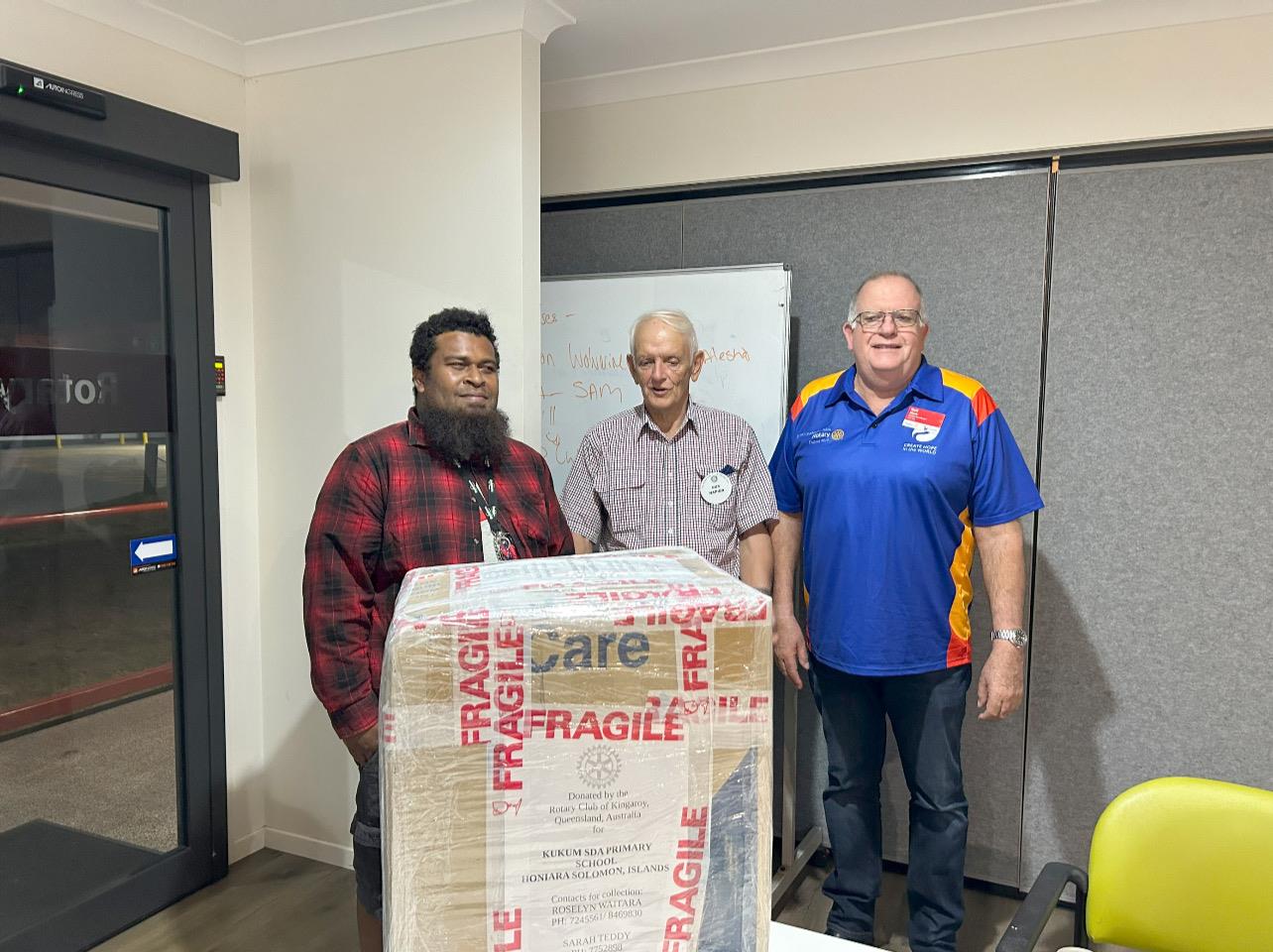  Laptops for the school children of the Solomons Islands. Seen here at the presentation are Roy GIZO, from Honiara, club member Gus Napier and club president Neil Black |
||||||
Kingaroy High school Interact Club This week we had the pleasure of having the incoming Interact Club executive drop in to our Monday night dinner meeting. From left to right we have Club member Carmel McKeering, Casey Springhall - treasurer, Matti Van Schynder - secretary, Addison Flieschfresser - President and Debbie Hail Club member. |
||||||
The Spark Of LifeWhen the youth of our community come together to do good in the world, we feel wonderful sense of hope for the future and knowing that the future is looking brighter. Every day we read see and hear about nothing but the news of pain and suffering in the world at large. Now days good news seems to be a rare and precious commodity indeed. But then we hear of people wanting to help others. Young people, saying to the world "we can help. We will help and we want to help now". These then are the youth that come together and form an INTERACT club in order to help others.  |
||||||
Bar persons extraordinaire
|
||||||
The Kingaroy and district vintage machine show 2022
|
||||||
The Rotary BarbequeThe fundamental fund raiser for Rotary Clubs around the world must be the humble barbeque. In so many places around the nation, so many people gather around the barbeque plate and enjoy the fruits of their labours while still enjoying the fellowship that flows naturally from this simple event. And so it was, at a recent event here in Kingaroy. Catering to hungry motor cyclists at a special educational event  |
||||||
RYPEN 2022
|
||||||
A new beginningRotary, like any other organisation must embrace change or perish. Time and progress will never wait for anyone or anything. So, we must forever continue to move forward and explore our options and confront our challenges  |
||||||
The sausage sizzle, let do the right thing!The Sausage sizzles, lets do the right thing.  There wouldn’t be a Australian Rotarian alive today that hasn’t been introduced to the art of the Sausage sizzle. It’s as synonymous with the Rotary brand as the golden gearwheel. The the aroma of onions and sausages frying wafting on the breeze attracts people from far and wide. It simply cannot be ignored! Every Weekend, all over this wonderful nation of ours, miles of sausages and truck loads of onions are brought together at the altars of the humble barbecue and are prepared and cooked to just the right degree of delicious perfection and offered up to our customers. To them we offered multiple choices of tomato, barbecue, mustered or Sweet Chilli sauces. Singularly or collectively to be added to the master piece that is the barbecued sausage on fresh bread smothered in caramelised onions _____________________________________________________________________________________________________ |
||||||
RYDA & Rotary - Connecting The Dots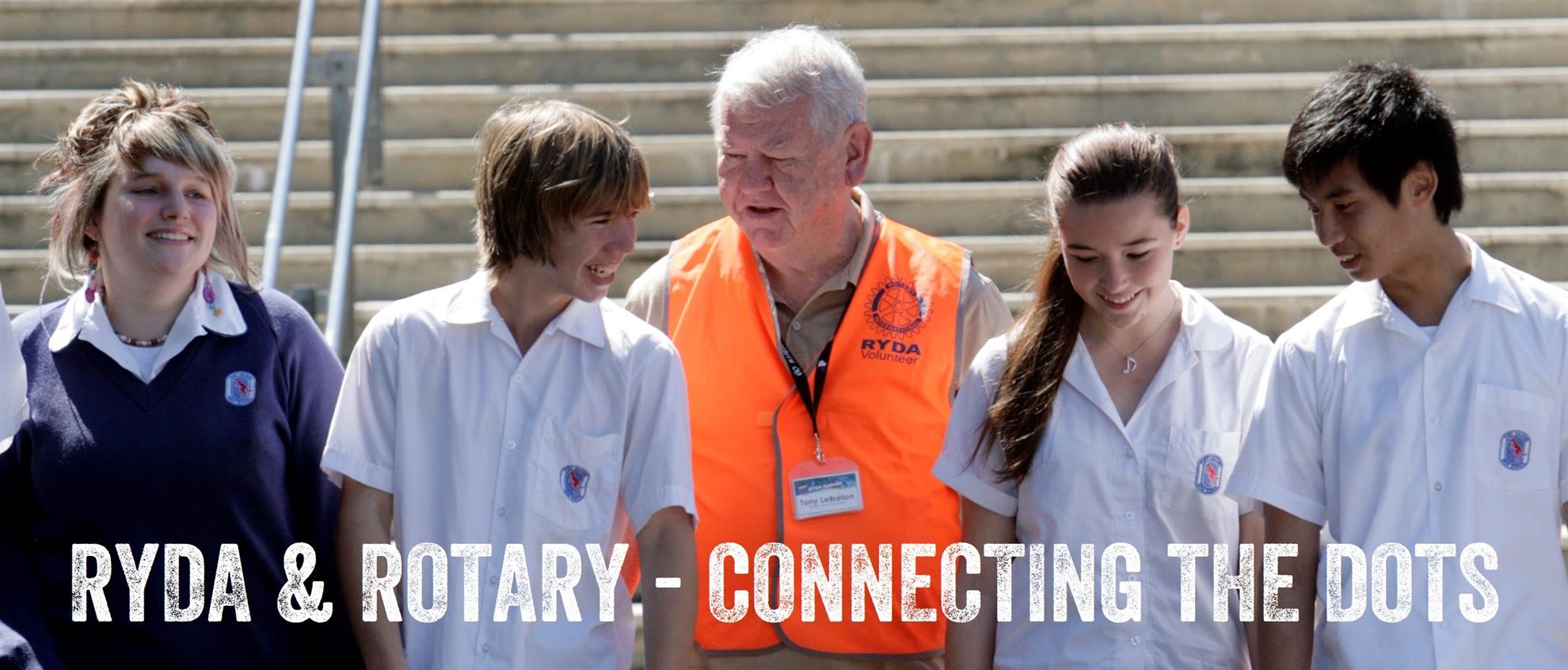 Welcome to the nineteenth edition of RYDA & Rotary - Connecting The Dots. This monthly newsletter provides you with tools and tips to assist in the delivery of RYDA workshops, including tips on delivering during the uncertainty of COVID. |
||||||
A aged care project - they are not forgotten
|
||||||
NYSF
|
||||||
Don't fence me in..I don't think so
|
||||||
Australia Day Award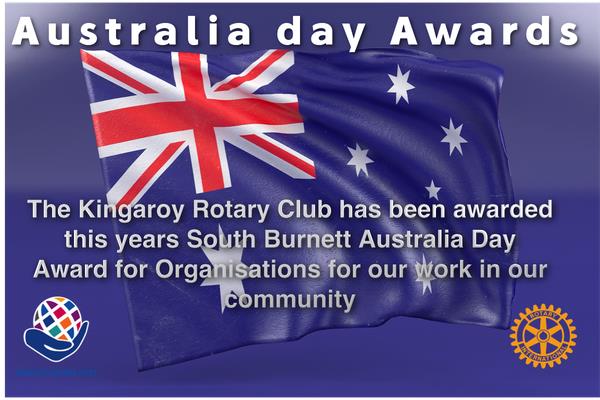 It is with great pride that we can announce that we, as a club, have been honored by our community by being awarded this recognition
|
||||||
Polio in Australia Remembering Australia’s polio scourgeThe movie Breathe reminds us of the days when polio indiscriminately cut down the fit and healthy, so what was it like in Australia for those who contracted the disease? Houses were fumigated, people quarantined, and entire families ostracised. Desperately worried parents resorted to hanging pungent camphor around their children’s necks in a misguided effort to ward off the virus and some fled to the mountains to escape. This was the small town of Railton in Tasmania during the worst outbreak of polio in Australia in 1937. For more than half a century, through to the 1950s, Australians were periodically terrified by recurrent epidemics of polio that could potentially leave its victims paralysed, sometimes permanently. 
Hospital wards filled up with paralysed victims bandaged into splints and families built special carts to move around their stricken children. At its worst, victims would be left reliant on artificial respiration for the rest of their lives. It wasn’t until the 1950s that an effective vaccine was developed that would eventually eradicate the disease in developed countries; it’s estimated that 20,000-40,000 Australians developed paralytic polio between 1930 and 1988. The release of the movie Breathe, the inspirational true story of Englishman Robin Cavendish’s battle with paralytic polio, is a reminder of a disease that was nothing short of a scourge.  Coming to grips with a 'silent killer'But today it is almost forgotten, except by those whose lives were and remain directly affected. Polio Australia estimates that Australia has some 400,000 polio survivors. But in recent years adults who suffered minor illnesses or had mild muscle weakness during the earlier epidemics are now also suffering Post-Polio Syndrome with unanticipated muscle weakness and atrophy. As a physiotherapist who began working with polio victims, the film is a reminder of the long legacy of polio, the ongoing role of rehabilitation and the crucial role of vaccination in finally tackling the disease. My mother, Freda Kimpton, graduated as a physiotherapist at the end of 1937, at the peak of the largest epidemic. She immediately joined the Royal Children’s Hospital domiciliary service, treating children in North Melbourne, Carlton and Footscray. It was women like my mother who devoted much of their professional lives to people who had been paralysed by polio. Twenty years later, as a physiotherapy assistant in the summer holidays from 1957 to 1962 at Fairfield Hospital, I helped the physiotherapists in mobilising joints, stretching and exercising muscles, making plaster splints and abdominal corsets. Breathe rekindled the memories of those years, particularly of Fairfield’s respirator ward and the people in its ‘iron lungs’.  Child in a double Thomas splint with the head positioned with ‘blinkers’. Picture: Royal Children’s Hospital Archives Polio is caused by an enterovirus. It is contracted orally through infected faecal matter, such as on someone’s hands or an object, and is contagious during the incubation and acute phases. If polio affects the central nervous system it can lead to paralysis and the subsequent atrophy of muscles, ending in contractures (the permanent shortening of a muscle or joint) and permanent deformity. People who survived the acute stage with paralysis faced years of rehabilitation. In most cases patients used respirators for only a short time, but others like Australian June Middleton, who contracted polio as a young, active woman of twenty-three, remained in an ‘iron lung’. When I first met her, June had lived in her ‘iron lung’ for fourteen years - she died at the age of 83, the world’s longest surviving person living with polio in a respirator. An iron lung is a large, elongated sealed cabinet enclosing the patient up to the neck. It requires a mechanical pump to produce negative pressure which replaces the action of the respiratory muscles during breathing in. When the negative pressure is released, the patient breathes out. The story of Tasmanian Rebecca Round is emblematic of the hardship and determination of Australians forced to live with the impact of polio. Rebecca grew up on a farm near Railton and contracted polio in the 1937 outbreak, aged just seven. Her twelve-year-old sister and two cousins also contracted the disease. One friend died and another was left badly paralysed. The children were hospitalised and put into Thomas splints, which maintains the joints of the lower limbs in a comfortable position. The process sees patients bandaged in at ankles, knees, hips, waist. An upper body and head piece keeps the arm joints in neutral positions and if neck muscles are involved in paralysis, the head is ‘blinkered’. Hospitals created long balcony wards and open wards that allowed children to enjoy fresh air and sunshine. Rebecca Round spent three years in hospital in Launceston. Adults with paralysis spent up to two years in hospital, but for growing children it was often longer. Rebecca’s mother rode her push bike along the gravel road the 56 miles (90km) to and from Launceston every Sunday as hospitals only allowed parents to visit children on the weekend. But there were opportunities to play – for example, children confined at Frankston Orthopaedic Hospital were taken to the hospital’s beach.  Children on the beach at Frankston Orthopaedic Hospital. Picture: Royal Children’s Hospital Archives When she eventually left hospital, Rebecca wore callipers. Although her left leg and foot and left arm were weaker than the right, she learned to ride a bike again. Boots made especially for her cost her father two weeks’ wages, and at age twelve she had surgery to lengthen the shortened tendons to her foot. But she was determined to go to school, and did well, ultimately earning a university scholarship to go to Hobart and train as a teacher. But not all patients could go home due to more severe problems, particularly with breathing or widespread paralysis. These days, most children are vaccinated against polio before school age and this has seen the disease completely disappear in all westernised countries. |
||||||
History of Women in RotaryWomen are active participants in Rotary, serving their communities in increasing numbers and serving in leadership positions in Rotary. The 1989 Council on Legislation vote to admit women into Rotary clubs worldwide remains a watershed moment in the history of Rotary. “My fellow delegates, I would like to remind you that the world of 1989 is very different to the world of 1905. I sincerely believe that Rotary has to adapt itself to a changing world,” said Frank J. Devlyn, who would go on to become RI president in 2000-01. The vote followed the decades-long efforts of men and women from all over the Rotary world to allow the admission of women into Rotary clubs, and several close votes at previous Council meetings.
|
||||||
Young Inventor Eco-Friendly Bricks Come Full Circle
|
||||||


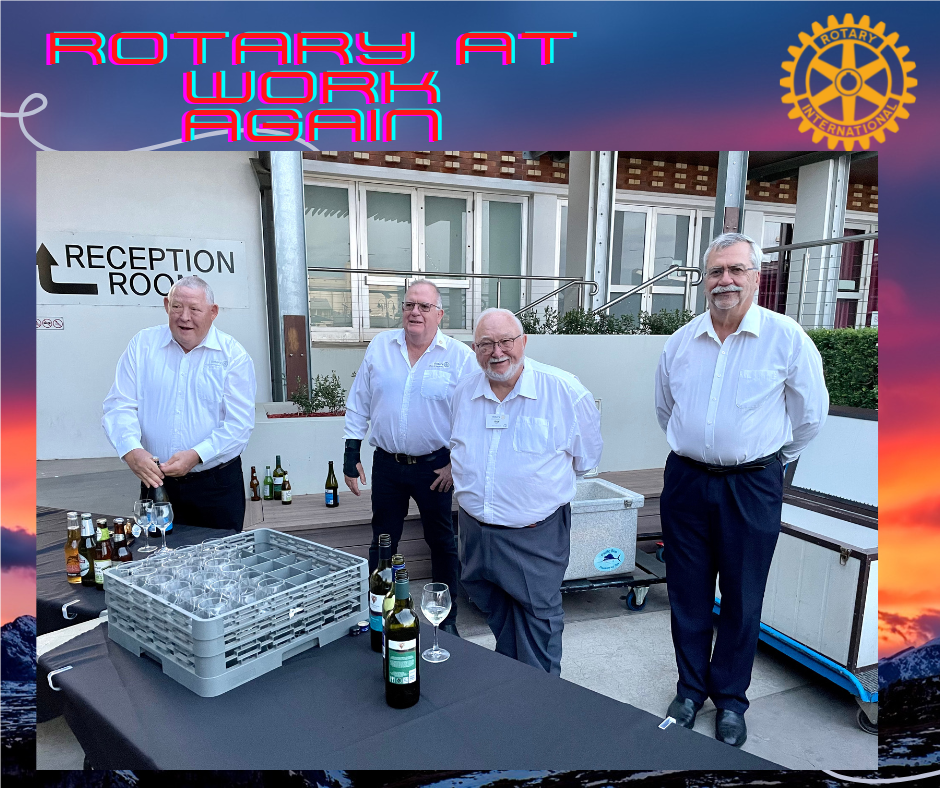

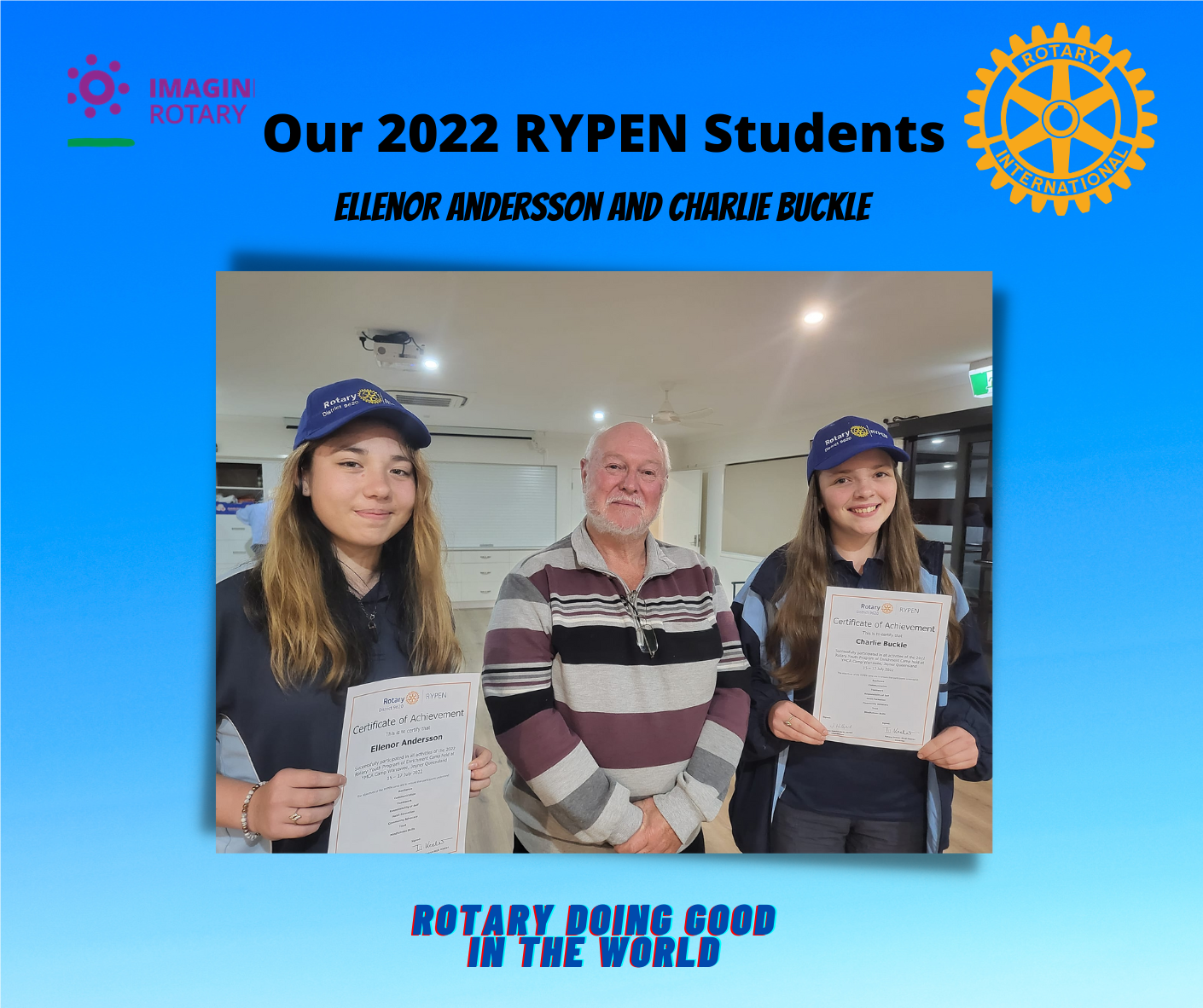







 Every hero has an origin story. “I was 10 years old when the entire journey started,” explains Binish Desai. It began with a cartoon called Captain Planet, an animated TV series from the 1990s about an environmentalist with superpowers. Desai can still recite the show’s refrain: Captain Planet, he’s our hero / Gonna take pollution down to zero! “That tagline stuck in my mind,” he says. “I wanted to do something to help Captain Planet.”
Every hero has an origin story. “I was 10 years old when the entire journey started,” explains Binish Desai. It began with a cartoon called Captain Planet, an animated TV series from the 1990s about an environmentalist with superpowers. Desai can still recite the show’s refrain: Captain Planet, he’s our hero / Gonna take pollution down to zero! “That tagline stuck in my mind,” he says. “I wanted to do something to help Captain Planet.”